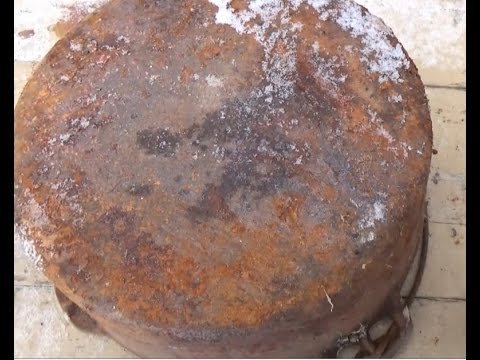So you may have seen my other article about cast iron cookware, and you are wondering what to do if you have some cast iron not up to snuff.
well there isn't much that can render a Item beyond any hope.
warps: well just have to deal with it, use it for baking etc... Happens from getting to hot/uneven heat.

Rust.: the most common issue with old iron.. There are a couple methods for removing, one basic, one a bit more advanced... Biggest issue left from rust is pitting... Pits will fill in over time
Carbon build up: this is normal with extended use of cast iron, it has to get pretty severe before it becomes a problem, but it's an easy fix... JUST DONT toss pan into a fire to burn it off

Cracked/broken : this is a maybe... Some can be fixed with a special kind of welding, however any collectors value is ruined
pink/scaled iron: this is permenant damage that happens from try to restore iron in a fire, gets to hot and changes the structure... Will not hold seasoning for cooking... Has a pink/red color in damages areas
ok now that we have identified the problems (could be one or more of list). You can start restoring it
Rust:
The simplest way is vinegar and water... Let it soak in a 50/50 solution.. (Don't leave unmonitored) use scratch pads and good old fashion elbow grease to scrub off the rust... For really deep and stubborn rust, a bit of sandpaper can help...
there is is another method, which most collectors use that I will mention, but go into my depth in another article, and that is electrolysis.
basicly using battery charger, sacrifice metal, and water with washing soda in it, you can get the rust to release from the cast iron and attach to something else, it's very effective.
carbon:
this tends to scare a few folks but with proper safety equipment it's not a problem..
you will want to create a lye bath... At most hardware stores you can get 100% sodium hydroxide aka lye/ drain cleaner.... Mix with about 1lb to 5 gals of water.... This is caustic!! Wear eye protection and rubber gloves... Add Lye to water, not water to lye...
place cast iron items in bath and leak soak until everything comes off and they come out clean... Since with cold water.... Can take days .... Keep your lye bath, as you can do many items with one bath...
next article... How to restore and maintain after cleaned
I enjoyed reading your post, Greg! Keep sharing with us.
Upvoted & Followed.
never tried it but I have been on a hunting forum and a few people there recommend throwing it in a hot fire?
The problem with a hot fire is predictability and control.. Now you will see everyone and his uncle swear that's how grandpa did it on the wagon trains out west etc... Well it can be done... You can also jump out of a plane without a chute and live... Just don't count on the same results every time ... And besides if grandpa did wreck one, it's a simple 50 cent item at the next hardware store to replace ... Problem is... Most of those foundries went under years ago... Finding a new Griswold skillet just ain't like it used to be...
How hot is your fire? I mean exactly... Too hot and scaling or pink iron occurs (and no we don't know that exact temp on ever piece). Is your fire the exact same temp all over? Never seen a camp fire that was... What happens to a fire when a breeze fans it? How do you cool the item down evenly..
We used to do surgery by drilling holes in your skull and letting blood out too, but there are better ways these days... And if you ever felt how light and thin a 150 year old cast iron skillet is, you just can't imagine sticking it in a fire... Thanks for the questions
Do you have any before and after shots?